Why troopers use ladies' tights – and six other secrets of Army ceremonial life
With their iconic red tunics and bearskin caps, guardsmen are a classic emblem of British life.
Hundreds of thousands of tourists flock to Buckingham Palace each year to see these smart soldiers stand to attention, sometimes in sweltering conditions.
However, there's more to British Army ceremonial life than these uniformed sentries. Here, we explore seven surprising customs, hidden quirks and centuries-old traditions.
The Blues & Royals can salute while not wearing a headdress

In the British Army, saluting without a headdress is strictly not allowed – unless you're in the Blues & Royals.
This unique privilege dates back to 1760, when an officer named John Manners, the Marquis of Granby, famously lost his hat and wig in battle – but saluted his commander regardless.
The gesture was turned into a regimental tradition and continues to this day.
The Marquis's courage and style won him admiration across Britain, and he became one of the most recognisable military figures of the 18th century.
But in the Blues & Royals, the moment he chose to salute without his hat is what he's remembered for every day.
The Coldstream Guards might be the oldest regiment – but it's not the most senior

The Coldstream Guards was formed in 1650, making it the oldest regular regiment in the British Army – something its soldiers are rightly proud of.
But on parade, they're not the most senior. That honour goes to the Life Guards, part of the Household Cavalry, which was formed 10 years later in 1660.
Why? It comes down to a quirky rulebook called the Order of Precedence, a hierarchy that governs the ceremonial pecking order when regiments are on parade.
In a nice bit of irony, the Coldstream Guards' regimental motto is Second to None.
Some historians believe it was chosen deliberately.
A regiment's Colours are so important that even the King salutes them
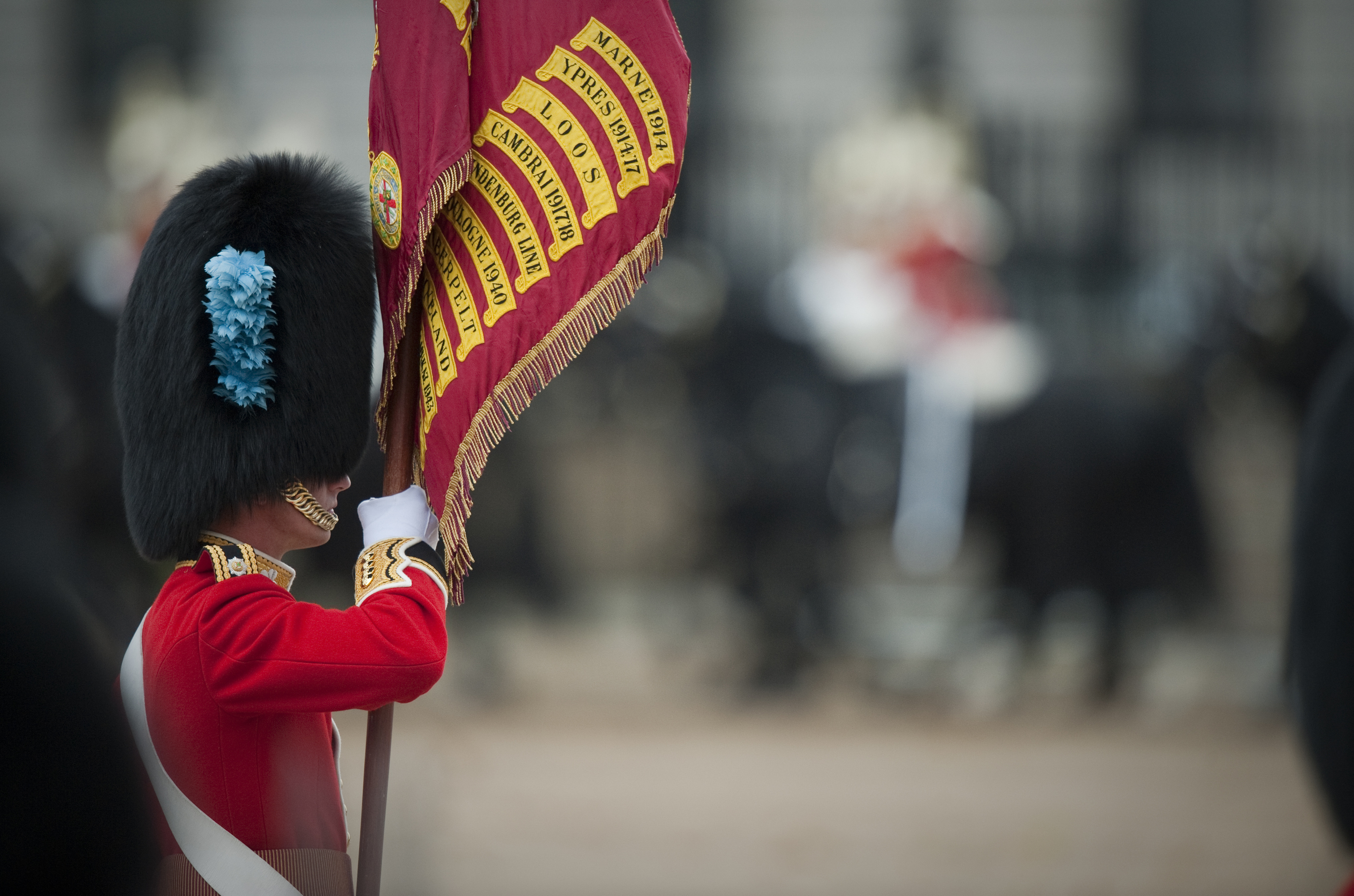
On parade, the most important object isn't a person – it's the Regimental Colour, or in some regiments, the Standard.
These beautifully embroidered flags list the regiment's battle honours and represent its heritage, identity and honour.
They're so revered that they're even assigned armed escorts, known as the Escort to the Colour, or Escort to the Standard.
When a Colour or Standard is on parade, everyone pays their respects – including the King, who salutes or bows his head in recognition of the sacrifice and service the object represents.
Soldiers in the Household Cavalry polish their kit with ladies' tights
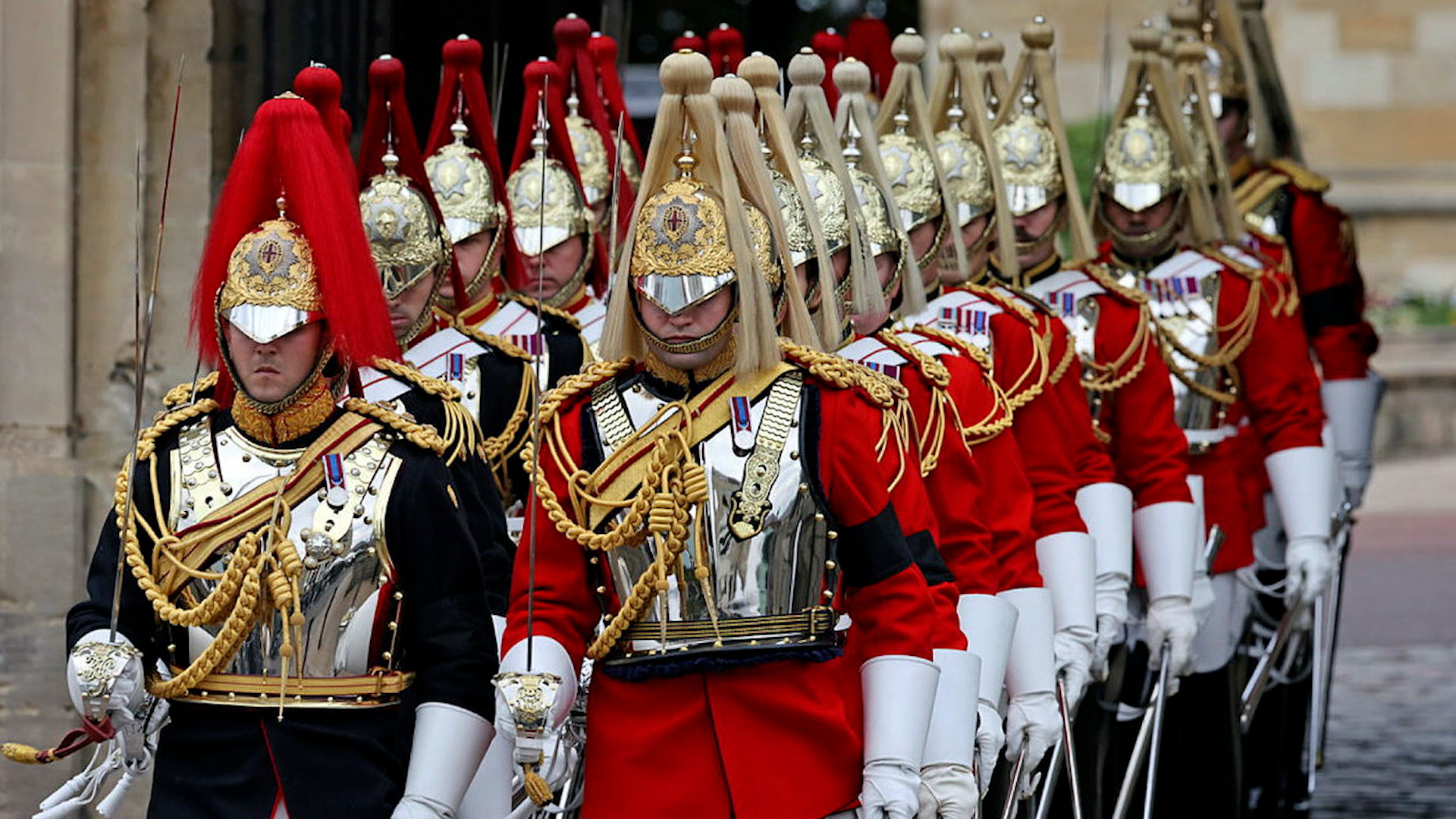
When it comes to getting the perfect shine on leather kit, nothing beats a pair of ladies' tights – or as they're known in the ranks, a pair of nylons.
After hours of applying polish, soldiers use tights for the final buff – bringing boots, reins and saddles up to parade standard.
It's an old-school trick passed down through generations.
Troopers are often spotted buying multiple packs of tights from shops near their London barracks, including in Harrods, just a short walk from the base.
The result? Leather so shiny it looks like glass.
The Household Cavalry's immaculate turnout is no accident – it's the product of long hours, precision and a humble pair of ladies' tights.
The Royal Welsh march alongside a goat in uniform
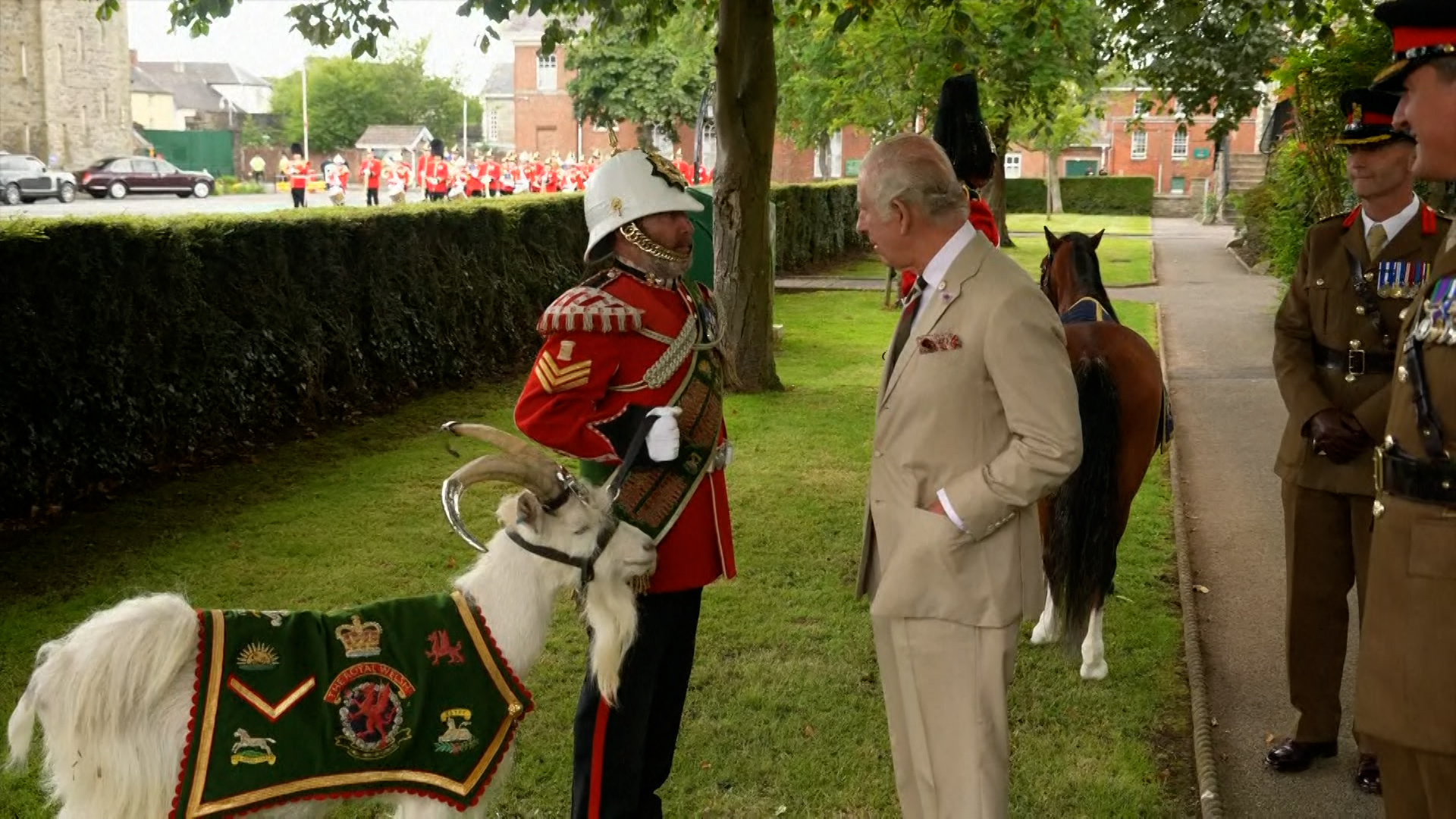
The most unusual soldier on parade within the Army might be Shenkin the fourth, the regimental goat of the Royal Welsh.
The Royal Welsh have marched with a goat for centuries. Shenkin wears silver regalia, has his own handler and even holds a formal rank.
He's treated like one of the lads – and yes, goats can get in trouble. In 2006, a previous goat named Billy was demoted by the chain of command after misbehaving on parade.
The lance corporal, who has since sadly died, was busted down to fusilier for refusing to march in a straight line.
The Irish Guards receive shamrocks from royal princesses
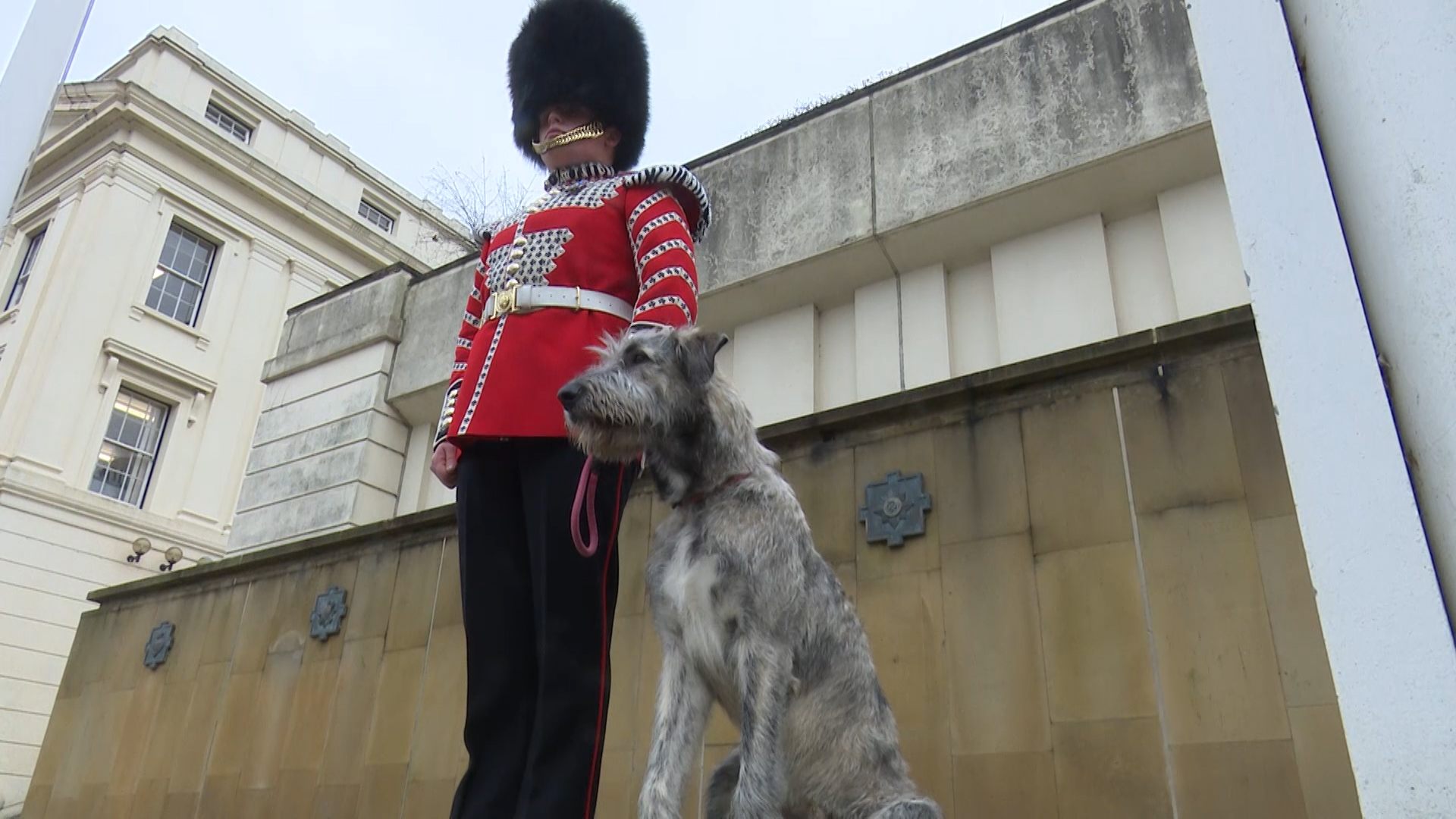
Every year on St Patrick's Day, the Irish Guards are presented with fresh shamrock, usually by a senior royal, often a princess.
The tradition goes back to 1900 and celebrates the regiment's Irish heritage.
Even the regimental mascot – an Irish wolfhound affectionately nicknamed Seamus – gets his own sprig on the big day.
It's one of the Army's more elegant customs, and a reminder of the strong bond between the Royal Family and the regiments they support.
Military music is not just background noise
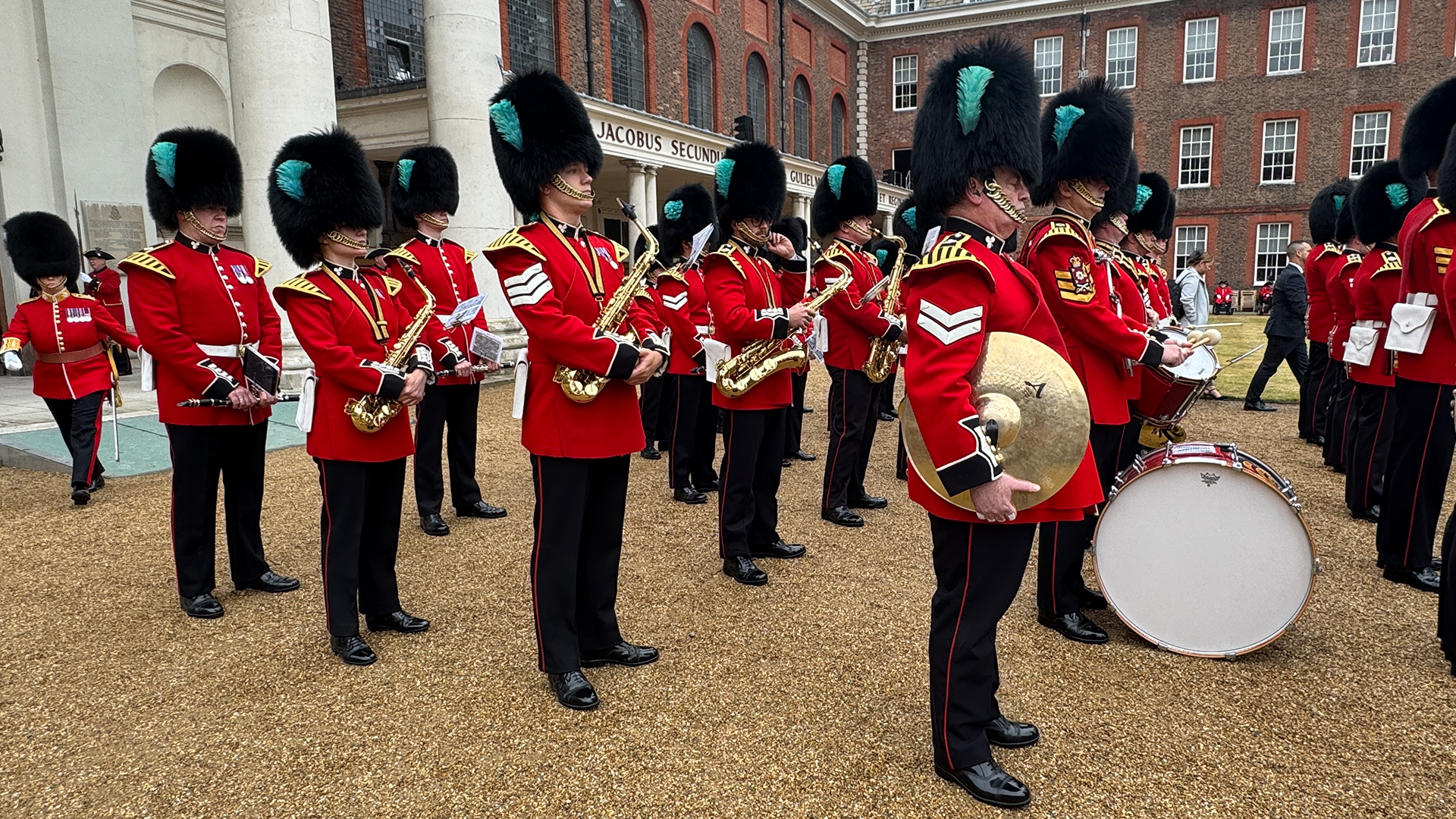
Military bands aren't just there to provide a stirring soundtrack to ceremonial events.
Their music controls the rhythm of the entire parade, giving soldiers the beat they need to step off and remain in step as they march from A to B.
The bass drum, in particular, acts like an invisible conductor's baton, keeping everyone going at the right speed and, of course, the musicians in time with each other.
The music we hear isn't randomly chosen, either. Nearly every regiment has its own regimental march – a tune that carries history and identity.
So next time you see a ceremonial event on TV, look and listen carefully.
That soldier beating the bass drum? They're not just keeping time. They're directing the entire performance – step by step, beat by beat.









